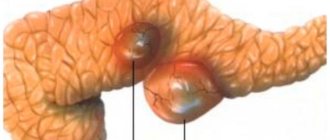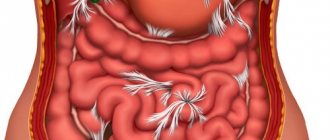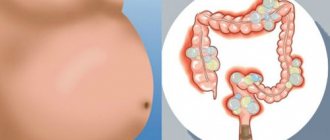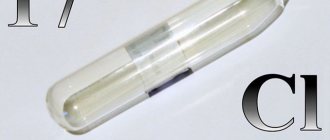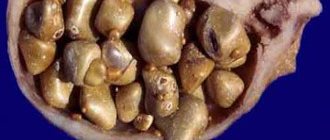A very common inadequate reaction of the human immune system to external factors is an allergic cough, the symptoms of which can be combined with a runny nose, sore throat, itchy nose, pain in the eyes and lacrimation.
Allergy is a real punishment for a modern person, because in the pursuit of convenience, comfort, pleasure - advanced technologies give rise to the rapid development of the chemical industry, the automotive industry, the abundance of electromagnetic fields in human everyday life - all of this has a colossal negative impact on the immune system. And it has long been known that any allergic reaction is a failure in the protective function of the body, when the immune reaction is aimed at seemingly harmless, non-life-threatening agents - plant pollen, food products, animal fur, even frost and sun can be the culprits of cold allergies or allergies in the sun.
By nature, a person should not have such a reaction, and its appearance among the majority of the planet’s population indicates that humanity is on the brink of self-destruction, no one thinks deeply about this, but this is only the beginning of changes that can lead in a few generations to irreversible global changes in population health.
Already now, children are born with an innate tendency to allergic reactions, how many children suffer from bronchial asthma from the age of 2-5, and in order to live, just to breathe, they are forced to use hormonal drugs that suppress an already impaired immune system. How many children suffer from various types of food allergies, when the child can eat practically nothing that is sold ready-made in stores. If humanity does not stop, soon all products will be completely unfit for consumption, and the air will not be inhalable without special purification.
About allergic cough
Allergic cough is a very common manifestation of allergies.
There can be several types:
- Dry cough . The most common type of cough due to allergies is characterized by the absence of phlegm;
- Wet cough . With allergies, it is less common than dry, characterized by the release of clear sputum;
- Barking cough . It is more common in children and has a characteristic sound.
The cause of allergic cough in children and adults is the reaction of the allergen with special blood proteins - immunoglobulins. The fact is that the allergen itself is a harmless substance that is found in the environment and does not affect most people.
However, when it enters the blood of a person prone to allergies, it reacts with special proteins of the immune system. As a result, mast cells are damaged and histamine (as well as serotonin and some other substances) is released.
Histamine, entering the blood, causes swelling and spasms of the lower respiratory tract. Thus, due to swelling and spasm, the lumen of the bronchi and trachea narrows, and the amount of air passing into the lungs decreases; the person begins to choke and cough.
Cough with allergies symptoms
The development of an allergic cough can take several forms. Depending on the type of reactivity of the immune system, it manifests itself at lightning speed or with a gradual increase in clinical manifestations.
With a rapid increase in clinical symptoms associated with an immediate type reaction, a significant deterioration of the condition occurs. The patient feels severe suffocation, lack of air, and swelling in the upper respiratory tract. There is a noticeable formation of a large amount of mucus in the bronchial secretions, and the development of shortness of breath. The cough is dry, sputum is difficult to separate, and is sometimes also called wheezing. The course is of a paroxysmal type. With a delayed type reaction, the patient can rarely name the exact conditions of its occurrence. A dry or wet hacking cough appears, which may subside or, conversely, intensify depending on the situation.
The development of cough is accompanied by symptoms characterizing an allergic reaction in the form of lacrimation, rhinitis with the appearance of large quantities of nasal discharge, as well as sneezing.
Attention! An allergic cough occurs without the development of sore throat, sore throat, or clinical manifestations of a cold or inflammatory reaction.
Main causes of allergic cough
In children
Causes of allergic cough in children:
- Hereditary predisposition. More often, an allergic cough develops in children if blood relatives suffer from bronchial asthma, neurodermatitis, hay fever, or food allergies;
- Reduced immune function;
- Poor environmental conditions;
- Constant smoking in the apartment;
- Introduction into the diet of a large number of products with dyes, flavors and other chemical additives;
- Infection with helminths.
In adults
Causes of allergic cough in adults:
- Hereditary predisposition;
- Work related to poisons and chemicals;
- Environmental influence;
- Penetration of obvious allergens into the mucous membranes: dust, dirt, flowering, and so on;
- Hypothermia, overheating, traumatization;
- Smoking;
- Prolonged stay in dusty places;
- Exposure to mold;
- Excessively dry air;
- Certain foods;
- Diseases of the endocrine system.
Causes of pathology
Various substances can become agents of the allergic process. People living in contaminated areas near industry are most often susceptible. You should not actively get involved in painting doors, windows, and furniture at home.
Any paint, even good quality and expensive, is a trigger for allergies. Therefore, the second risk group consists of people engaged in painting or car painting.
The presence of protection on the front part cannot protect 100%. Since the agents penetrate through the skin (pores), thereby disrupting metabolic processes in the body.
The third group included people from working professions: janitors, builders, asphalt pavers and farmers. Inhalation of dust on the streets of large cities, as well as plant pollen, can be deposited in the bronchi and lungs for a long time. Moreover, allergies do not always manifest themselves in the first carrier, but are passed on to their descendants.
Allergies are also caused by:
- immunomodified products;
- a large number of synthetic dyes, food additives;
- environmental disasters;
- the presence of fungus (mold) on the walls of apartments and other premises;
- lack of hygiene measures in the home.
The causes of allergic reactions and attacks are:
- fungus, dampness, mold;
- pollen and dust;
- chemical products for construction work, washing powders;
- detergents and animal hair;
- medicines, food;
- chocolate, smoke, dandruff;
- cosmetics, perfumes, synthetics;
- prolonged exposure to the cold.
Paroxysmal spasms occur within several hours after contact with the allergen. The attack lasts for a long time without appropriate treatment. Only an auxiliary remedy (a dosage form selected for the patient) will help you get rid of it.
How to distinguish an allergic cough from a cough due to colds?
Main differences:
- An allergic cough generally occurs suddenly and without any signs of general malaise in the body (primarily without an increase in body temperature);
- Very often, a cough manifests itself directly upon contact with an allergen, so you can determine the allergen that causes it: For example, you came to visit and your child began to pet the owners’ cat. After a few minutes, he begins to cough or sneeze, his eyes become watery and itchy, and a runny nose appears - this is a typical case of an allergy to pets.
- In the same way, a reaction to various chemicals, household chemicals (mainly chlorine-containing), strong odors, pollen, and more often manifests itself.
There may be cases when, with prolonged manifestation of an allergic cough, as a result of swelling of the respiratory tract, pathogenic bacteria begin to develop there, and infectious bronchitis or pneumonia also occurs.
In this case, it is more difficult to determine the allergy, so it is necessary to consult a doctor in a timely manner.
Symptoms accompanied by an allergic cough are:
- The presence of histamine and other substances in the blood that accompany an allergic reaction;
- Swelling of the lower respiratory tract;
- Spasm of smooth muscles of the respiratory organs;
- Hypotension is possible.
Getting rid of allergies
If an allergic cough is caused by pollen from indoor plants, you need to remove them. If an allergy to dust is established, all dust collectors must be removed: large soft toys, massive bedspreads, carpets. Often, allergy sufferers have to give up the idea of getting a pet because they are allergic to cat or dog fur. An allergy to the flowering of certain plants can sometimes even force a person to change their place of residence.
Enterosorbent drugs are used:
- Polyphepan;
- Enterosgel;
- Polysorb.
Thanks to its successful gel form, Enterosgel is convenient even for very young children.
A sudden attack of allergic cough will be facilitated by rinsing the nose and throat with a non-concentrated saline solution and accessing fresh air (ventilation).
On a note! An important element of successful allergy treatment is complete smoking cessation. In this case, both an adult with allergies and a child who is a passive smoker will benefit if the parents are addicted to this addiction.
Types of allergic manifestations
In addition to cough, allergies can be accompanied by the following symptoms:
- Allergic skin reactions: Quincke's edema is swelling that appears on various parts of the body due to exposure to an allergen;
- itchy skin;
- rash;
- hives;
- atopic dermatitis;
- tickling in the nose;
- lacrimation;
- hoarseness of voice;
Allergic reactions are also divided into:
- Anaphylactic - accompanied by the release of histamine, and, as described above, spasms and swelling. Such reactions, as a rule, occur quite quickly - from a few minutes. These include allergic cough, bronchial asthma, anaphylactic shock, as well as almost all types of allergies in children, etc.;
- Cytolytic - when body cells are destroyed as a result of improper actions of the immune system. For example, hemolytic disease of the newborn;
- Immune complex - the actions of the immune system damage the walls of blood vessels and cause inflammation in them. For example, systemic lupus erythematosus, allergic conjunctivitis;
- Late hypersensitization - slightly different immune mechanisms (special cells, lymphocytes) take part in it. Develops a day or more after exposure to an allergen. For example, dermatitis, asthma.
How symptoms appear
Along with the air flow, aeroallergens, which are absolutely harmless to healthy people, enter the nasopharynx of an adult. In high concentrations, they can only cause a sore nose. But the immune system of allergy sufferers reacts to irritants with hyperactivation.
Upon contact with the mucous membrane, the irritant binds to immunoglobulin. This interaction leads to the release of histamine, a substance involved in an immediate allergic reaction. Physiological processes are launched that lead to bronchospasms, the release of tears, and the accumulation of fluid in the tissues of the nasopharynx.
Swelling of the mucous membrane narrows the bronchial lumen. Difficulty breathing and a sore throat lead to an allergic cough. But such a reaction is not able to cleanse the body of the irritant. As a result, the allergy sufferer's condition worsens. Without medical care, his body can develop dangerous complications - Quincke's edema, bronchospasm, laryngospasm.
Where to look for the cause of allergic cough in children and adults?
There are a huge number of allergens around us, because almost any substance can be an allergen, as mentioned above. However, allergies to many substances appear in very rare cases (for example, to water), and to others - in 80% of contact with allergy sufferers.
Main allergens:
- Food: milk and dairy products;
- fish;
- eggs;
- soy;
- nuts;
- crustaceans (shrimp);
- shellfish (squid, mussels);
- wheat (often in young children);
- fruits and vegetables grown in artificial conditions with an abundance of chemicals.
- Early spring - wind-pollinated plants: hazel, walnut, birch, maple, alder;
In general, the main allergens for young children are food. Therefore, you need to immediately pay attention to seemingly harmless rashes and redness - there is a risk that in the future such a child will be allergic to other allergens.
Prevention
Prevention can be divided into two large parts - preventing attacks and preventing the development of allergies. The fight against attacks is determined by their nature and the main irritant. Isolating the patient from the allergen is the easiest way.
But understanding the mechanisms of allergy development suggests that the simplest way is not the most effective. The allergen may be one that is difficult to isolate from, or there may be several of them. , a general practitioner or allergist may recommend a hypoallergenic lifestyle. This concept includes the elimination of all possible irritants.
But even with strict restrictions, the allergy may not completely go away , and any contact with the irritant will lead to a resumption of symptoms. It is recommended to begin work on preventing allergies from early childhood, temporarily eliminating from everyday life foods and objects that cause itching and redness . In adults, this method is ineffective.
Prolonged allergic cough in children
As mentioned above, the danger of prolonged allergic cough in children is that the child does not understand what is happening and he begins to panic.
Often, night attacks occur, characteristic of an allergic cough, during which the child may suffocate.
Over time, an allergic cough in a child, if left untreated, can cause other dangerous diseases, for example, pneumonia, sinusitis, or bronchial asthma.
Desensitization and hardware methods
There is a theory that the introduction of small doses of an allergen into the body can reduce the manifestations of an allergic reaction over time. This method is implemented only under the supervision of a doctor in specialized clinics.
If an allergic cough is caused by many different allergens and the disease is severe, the doctor may recommend taking a course of hemosorption - blood purification using a special device to remove the allergen. For the same purpose, plasmapheresis is performed - removal of part of the plasma that contains allergens.
Diagnosis of allergic diseases
Methods for diagnosing allergic reactions are divided into those that are carried out directly on a person and those that are carried out in a laboratory.
Diagnostics must also necessarily include an examination of the patient (including instrumental - for example, x-rays), a study of the medical history and life of the patient, and a study of data on prescribed therapy.
Diagnostics carried out directly on a person include various skin allergy tests:
- Intradermal - when an allergen is introduced into the skin and the body's reaction is studied. For example, the well-known analysis for the Mantoux reaction;
- Application - when a patch with an allergen is stuck to the skin of the back or forearm;
- Provocative tests - when the allergen is injected directly into the target organ (nose, eye, oral cavity);
- Scarification - when an allergen is applied to the surface of the skin and it is slightly damaged by a scarifier. This method is the basis for diagnosing allergic cough.
These methods are quite popular due to their speed, simplicity and low price.
However, there are cases when skin testing is prohibited:
- Hematological and mental diseases;
- Age up to 3 years;
- Risk of anaphylactic shock;
- Exacerbation of allergic diseases.
Diagnostics performed in the laboratory include blood tests:
- Analysis for total immunoglobulin E;
- Analysis for allergy-specific immunoglobulins E;
- Analysis for allergy-specific immunoglobulins G;
- Analysis for the determination of histamine, cytokines, inflammatory enzymes;
- In rare cases, some other tests.
Laboratory diagnostics have recently become increasingly popular due to safety for the patient, automation, and the ability to quantify data.
Diagnosis of allergens
Upon examination, the doctor may detect swelling of the laryngeal mucosa. Hereditary history, characteristic complaints of the patient and the connection of the condition with the allergen suggest the diagnosis of an allergic reaction. Verification of the diagnosis will be helped by allergy scarification tests - clarification of the type of allergic substance by applying a drop of allergen to the damaged skin and monitoring further reactions.
Note! Contraindications to allergy tests are respiratory diseases, pregnancy and previous use of antihistamines.
Consultation with an otolaryngologist is necessary to exclude chronic diseases of the ENT organs.
Spirography will reveal obstruction of the bronchial tree.
The allergic nature of the cough is confirmed if the patient is officially diagnosed with the following diseases:
- hay fever;
- bronchial asthma;
- allergic rhinitis, tracheitis;
- asthmatic bronchitis;
- obstructive bronchitis.
Drug treatment of allergic cough
Antihistamines
The main drugs used in the treatment of allergic cough are antihistamines - they block histamine receptors in the nervous system, preventing histamine from contacting them and causing external manifestations of allergies (swelling, spasms, itching, redness).
Today there are 3 generations of antihistamines:
- The 1st generation is characterized by a strong antiallergic effect, but at the same time they have a strong sedative effect - they cause drowsiness. These drugs include Fenistil (average price 400 rubles ), Suprastin (average price 115 rubles ), Diazolin (average price 60 rubles )
- . The 2nd generation is distinguished by a selective effect on histamine receptors, therefore they depress the nervous system significantly less, the sedative effect is much weaker, but also has an antiallergic effect. This includes drugs with cetirizine - Zyrtec (price 180-350 rubles ), Cetrin (price 150-250 rubles ), Cetirizine (average price 100 rubles ), Zodak (price 130-500 rubles ).
- The 3rd generation has an even more pronounced selective effect on receptors; therefore, they have practically no sedative effect, while maintaining a powerful antiallergic effect, which is not inferior to the first generation drugs. The third generation includes drugs based on loratadine and desloratadine - Erius (average price 600 rubles ), Eden (average price 150 rubles ), Claritin (price 160-500 rubles ).
Fenistil
Suprastin
Diazolin
Zyrtec
Tsetrin
Cetirizine
Zodak
Eden
Claritin
Almost all of these drugs are available in the form of tablets and syrup. Tablets are prescribed for children over 6 years of age and adults.
Syrups intended for small children:
- Zyrtec is the active component of the drug, the histamine antagonist cetirizine, a second-generation antiallergic substance, use is allowed from six months;
- Erius is a long-acting antihistamine, use is permitted after a year;
- Cetrin - prevents the development and facilitates the course of allergic reactions, has antipruritic and antiexudative effects, use is allowed from two years of age;
- Claritin is a new generation drug that not only actively eliminates negative symptoms, but also rarely causes side effects; use is allowed from two years of age.
Fenistil and Suprastin are used from the first month of life (despite the fact that Suprastin is available in tablets).
Bronchodilators
In addition to antihistamines, bronchodilators are usually prescribed for allergic coughs. These drugs relieve spasm and inflammation of the bronchi and make breathing easier. An example is Eufillin tablets (average price 40 rubles ).
However, in difficult cases, with obstructive bronchitis and bronchial asthma, inhalation solutions are prescribed.
For example:
- Beclamethasone (average price 350 rubles ),
- Berodual (average price 300 rubles ),
- Pulmicort (price 780-1300 rubles ),
- Ventolin (average price 140 rubles ).
These drugs are usually diluted with sodium chloride solution (saline) in an amount of 0.5-1 ml. for 1-1.5 ml. saline solution.
After which inhalation is done using a compressor nebulizer.
A nebulizer is a device that turns medicine or mineral water into a kind of mist, which is inhaled through a mask or mouthpiece.
Beclamethasone
Berodual
Pulmicort
Ventolin
In more complex and advanced cases, with obstructive bronchitis and bronchial asthma, drugs based on montelukast are used:
- Single (price 450-900 rubles ),
- Singular (average price 900 rubles ),
- Montelukast (average price 550 rubles ).
These drugs are prescribed by a doctor and taken for a long time (several months).
Single
Singular
Montelukast
Enterosorbents
In addition to the listed drugs, enterosorbents are often prescribed for allergic coughs - these are drugs that are able to bind and retain various poisons, allergens, etc.
These drugs include activated carbon, known to everyone since childhood.
Modern and effective drugs, which are divided into 3 groups:
- Carbon - preparations based on activated carbon, take 1 tablet per 10 kg. body weight.
- Silicon - preparations based on silicon, for example, Atoxil, Polysorb. These drugs are available in powder form, which must be mixed with water to form a suspension; the dosage rate is usually 12 g. drug per day for 3-4 times.
- Natural – organic compounds: cellulose, pectin and others, for example Multisorb. And also based on white clay, for example, Smecta, it is available in the form of a powder that needs to be diluted with water, the intake rate for adults is 9g. per day, for children 3-6 years old.
Atoxyl
Polysorb Multisorb
Smecta
Enterosorbents are taken no longer than one to two weeks, because they interfere with the absorption of vitamins and beneficial minerals.
All medications must be prescribed by a doctor, since it is important to choose not only a single dosage, but also a general course of therapy.
When choosing drugs, other pathologies that a person may suffer from are also taken into account.
Set of diagnostic procedures
Treatment of allergic cough can begin only after examination and identification of the allergen. It is not recommended to remove allergies yourself or cure them using traditional recipes without appropriate examination.
A common mistake made by most people who discovered the pathology was the decision to take antiallergic drugs to relieve spasms and asthma attacks.
The tablets only relieve the inflammatory process. Also, allergy sufferers diligently avoid encountering their “enemy.” But such actions only alleviate the course of the disease; it is still necessary to treat allergies so that the allergic cough does not worsen.
Traditional methods of treating allergic cough
Good results for allergic coughs are obtained by training according to B. S. Tolkachev’s method, which is based on regular physical exercise, breathing exercises and hardening of the body.
The result is achieved within one year, the main condition is regularity of classes. Thanks to this technique, many people got rid of not only colds, ARVI, allergic cough, but also bronchial asthma. The technique is described in detail in the book by B.S. Tolkachev “Physical education against illness”
Folk remedies:
- For allergic coughs, it is recommended to do steam inhalations with baking soda: 1 teaspoon (without a large slide) per glass of water - it will clear the airways and make breathing easier;
- For a dry cough, you can drink warm milk with a teaspoon of honey , half a teaspoon of soda, but if you are not allergic to these components;
- Chop a medium onion and boil in a glass of milk over low heat, cool, drink 0.5 cup 2-3 times a day for 10-14 days;
- Fresh celery juice is used for allergies. In folk medicine, it is believed that it removes the allergen from the body;
- Ginger. Grate a piece of ginger root and boil for a few minutes. Take 2 tablespoons 3-4 times a day for 10-14 days;
- Gargling the throat and nasal cavity with a salt solution (1 teaspoon per 0.5 liters of water, you can take a ready-made saline solution for injection) will help remove the allergen from the body and prevent infections from occurring in the nasal cavity. Must be done regularly several times a day;
- Brew tea with chamomile flowers. Drink with a slice of lemon and a teaspoon of honey if you are not allergic to the components;
- Boil several bay leaves water, add a teaspoon of soda, when the tablespoon of honey has cooled a little. Drink ¼ glass 3-4 times a day.
Therapeutic therapy for an adult
Allergic cough is treated at home. Only severe attacks, when a person was unable to quickly stop the body’s reaction and life is at risk, go to the hospital.
In all other cases, the therapy is comprehensive, but at home. This applies to both drug treatment and alternative therapy recipes that will help quickly eliminate allergic cough. The combination of drugs and methods must be agreed with the doctor.
Medicines
It is possible to achieve relief during an allergic cough at all stages of allergy manifestation using medication. A number of dosage forms should only be prescribed by a qualified specialist after receiving the results.
The course of treatment for allergic cough includes antihistamines and a vitamin complex, which will help strengthen and develop the protective functions of the allergic person. In the off-season, it is imperative to undergo preventive maintenance and be prepared for the time of ragweed flowering.
Try to ensure complete exclusion of the allergen. If this is not possible, prepare for attacks in all available ways: buy herbs, pills, go on a diet.
Important! Allergies cannot be cured completely; they become part of a person’s life forever. Even regular prevention and timely relief of symptoms will not be able to eliminate the pathological process.
The only thing that people with an allergic cough should remember is to always have on hand a drug, a substance, a remedy that can bring relief during the period when an allergic cough occurs.
Recommended to drink:
- a properly selected vitamin and mineral complex that does not include provoking allergens;
- dosage forms for rapid discharge of sputum. Based on patient reviews, medications that are used during bronchitis are excellent;
- Mucaltin is suitable as an inexpensive mucalytic agent. A special feature of the drug is a change in mucus in the bronchi. Changes a dry cough to a wet one. Removes phlegm much faster;
- among antihistamine dosage forms, Zyrtec, Zodak and Cetrin are recommended;
- Sprays will help relieve allergic rhinitis. The greatest effect is given by Vibrocil, as well as Flixonase.
Preventive measures for allergic cough
An allergic cough can recur again and again. Therefore, the primary goal is to reduce the number of attacks.
To do this you should:
- Remove the patient from contact with the allergen;
- You need to get rid of pets and birds at home;
- Remove all sources of dust: carpets;
- heavy curtains;
- paths;
- replace down bedding with artificial ones;


